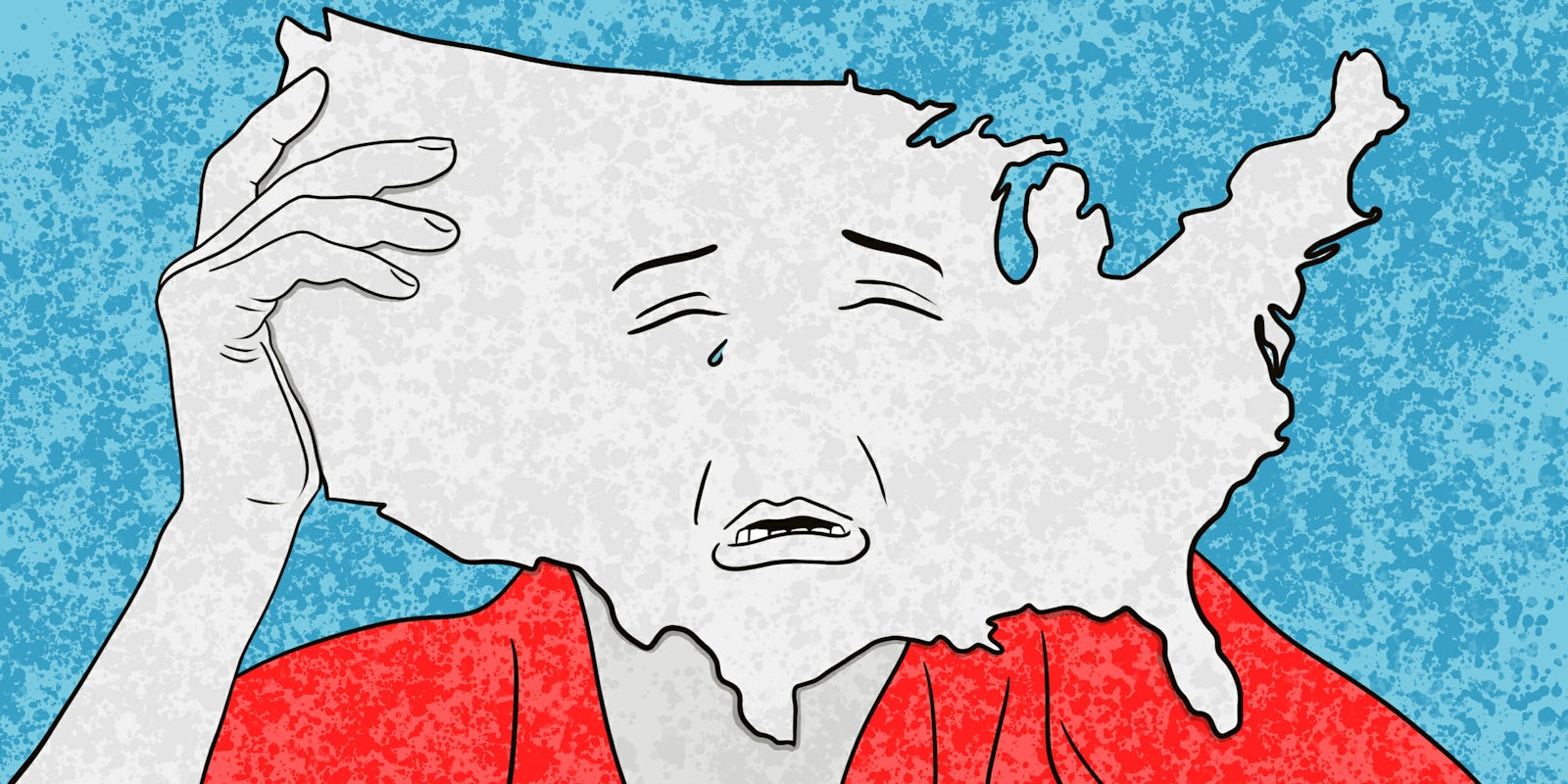Opinion
Today is the International Day of Happiness, but sadly Americans are less happy this year than they were last year. The United Nation’s annual World Happiness Report (WHR) found that the U.S. has fallen three positions, from number 15 to 18, on its list of happiest nations.
The report measures “subjective well-being”—how happy people self-report they feel and why—and combines a mixture of quantitative and qualitative measures to give an overall ranking of “happiness.” Some of the measures include the experience of care, freedom, generosity, honesty, health outcomes, income equality, and good governance. This year’s report also offered unique insights about the feelings of immigrants in the countries they migrate to and how they compare to migrants in other countries.
The findings all point to one hard-to-miss truth about contemporary American life: This may be the land of the free, but not everyone feels free, nor do they feel equal and happy.
Congratulations to all the happy people out there, it's #InternationalDayOfHappiness!
— notch (@notch) March 20, 2018
Tomorrow isn't.
In his book The Vanishing Middle Class, MIT economist Peter Temin discusses the status of the U.S. on a global scale and found that America is being grossly divided by the haves and have-nots: Whereas 20 percent of the population is well-educated and has good, stable work opportunities, the other 80 percent is a part of a low-wage sector, burdened by debts and anxiety about job security, and lacking in social support networks. Temin also blames the suppression of wages on the ultra-rich who have more power to influence politics and economic policy than their poorer counterparts.
“Without a robust middle class, America is not only reverting to developing-country status, it is increasingly ripe for serious social turmoil that has not been seen in generations,” Lynn Parramore, a senior research analyst at the Institute for New Economic Thinking, said of Temin’s findings.
The disappearance of the middle class is not America’s only problem, though it is a formidable one. Healthcare costs, debt, health-related problems—including obesity, depression, and substance abuse—job insecurity, political turmoil, racism, and varying forms of inequality all add to the dire circumstances that have made one of the world’s richest countries a not so happy place for its citizens.
The WHR also highlighted the fact that non-citizens—and America was long-touted as “a nation of immigrants” until the Trump administration went and changed that distinction—are also impacted by the happiness of locals. It found that, in “happy” countries, migrants are usually as happy as those who are locally born, but some of that happiness hinged on the attitudes of locals. The more open and accepting locals are toward migrants, the more happiness migrants reported. Unsurprisingly, many U.S. immigrants have likely reported decreased happiness in the Trump era, which has been dominated by racist immigration policies, increased enforcement of deportation, and an imperative to build a wall to keep immigrants out.
In celebration of #InternationalDayOfHappiness, please enjoy this picture of Kanye smiling. pic.twitter.com/tnmcPEOj3d
— Norm Kelly (@norm) March 20, 2018
Meanwhile, the Nordic countries that consistently occupy the top five positions on the Happiness report—Norway, Denmark, Iceland, Switzerland, and Finland—are not only busy combating class warfare and offering services to immigrants, they also have extensive and comprehensive welfare programs that benefit all of its citizens and provide a safety net for the poor and unemployed. Northern European citizens enjoy access to government-funded services like free education and universal health care, regardless of income. According to WHR, these nations also rank the highest for gender equality, trust in the government, and freedom from corruption. In other words, Nordic countries care about their people and invest heavily—both politically and economically—in promoting equality in a way America simply does not.
Much of these positive reforms are credited to the dominance of democratic politics. For example, the Swedish Social Democratic Party (SAP) governed the country for about four decades between 1936-1976 and implemented many of the agendas that continue to benefit its citizens to this day. America’s Democratic leadership may push for similar human rights for its citizens, but our Democratic Party has struggled to maintain dominance over its Republican counterpart and eek out successes even when there is a Democratic president and a stronghold in Congress.
Nevertheless, many of these once-far-fetched “liberal” ideas are beginning to take root in the U.S. A 2017 national survey by Pew Research Center found that 60 percent of Americans believe that it is the federal government’s responsibility to ensure healthcare coverage for Americans. Another survey found that two-thirds of Americans believe public colleges and universities should be free to those who are willing to and meet the requirements to attend. Millennials show the strongest support for free college with 77 percent voting in favor.
All of this is good news since these young Americans, with the power to vote, could decide the fate of our country. In a handful of years, perhaps the U.S. could be a lot happier.
